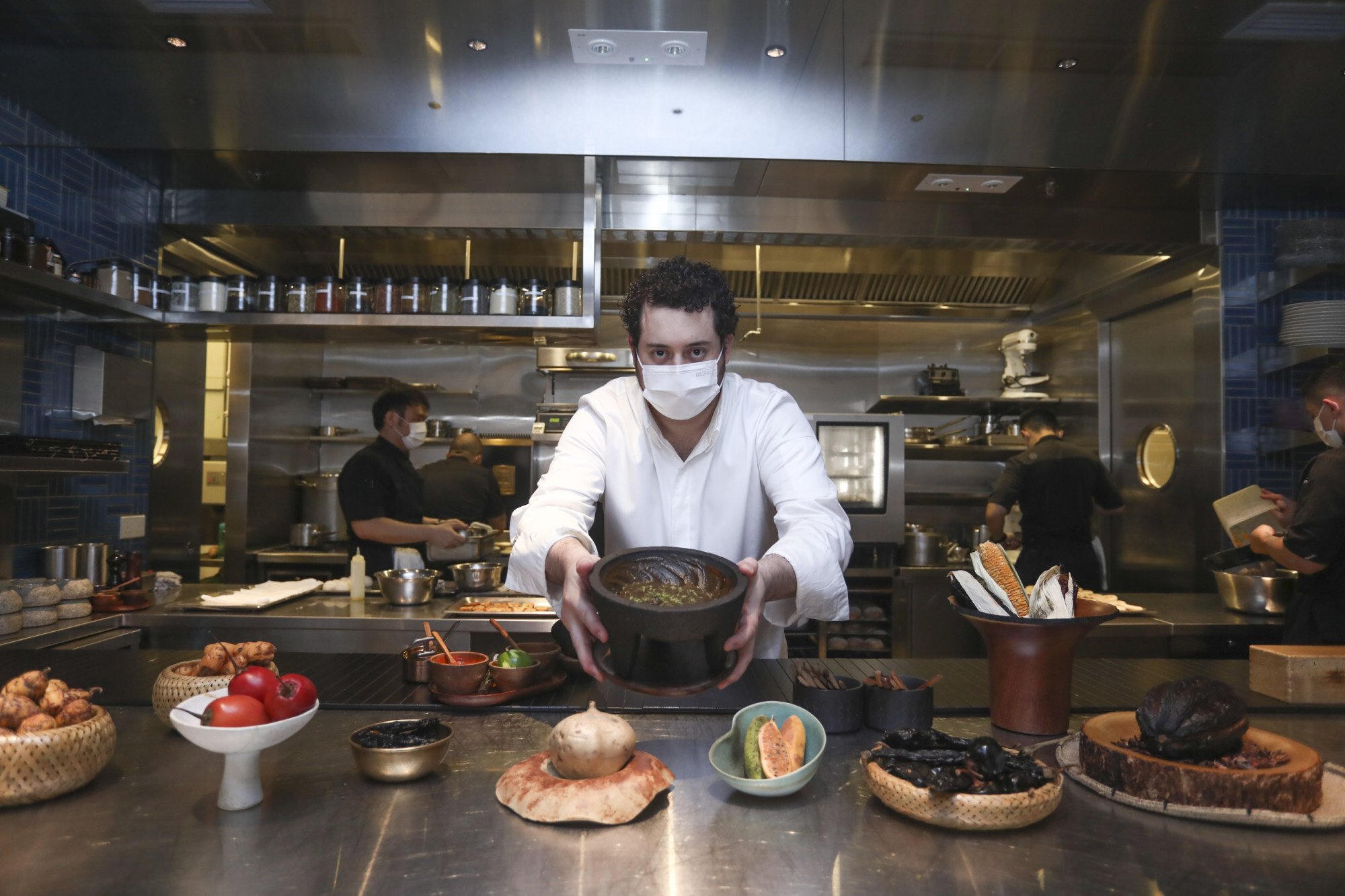
First Venezuelan chef with a Michelin star talks arepas, hallacas and promoting national dishes at his French fusion restaurant in Hong Kong, Mono
- When Ricardo Chaneton became the first chef from Venezuela to earn a Michelin star he became a social media celebrity across Latin America
- He describes Venezuelan food favourites – arepas and hallacas – and how he educates diners at his French fusion restaurant Mono about Latin American cuisine
When Hong Kong restaurant Mono, which serves contemporary Latin American-influenced French cuisine, earned a Michelin star earlier this year, its chef-owner, Ricardo Chaneton, became a celebrity overnight.
“We had 12,000 followers on Instagram and within four days it was 40,000,” recalls Chaneton. “It was crazy and beautiful too.” Restaurant staff needed three laptops to get through the 10,000 messages, including interview requests from the media.
He says one recurring question the Latin American reporters asked was: how is Venezuelan cuisine seen in the world?

There is the arepa, a flat, round, fried maize bun that is sliced in half and stuffed with fillings, like a mini sandwich.
Venezuelans fry them in a cast iron pan called a budare, which they treat like Chinese cooks treat their woks – it is not washed with soap but rinsed in water and is seasoned with time.
At Mono, the arepas are filled with a mixture of fish, avocado and coriander. A good arepa, Chaneton says, is slightly burned on the bottom so it has a hint of bitterness that balances the sweetness of the maize. The texture is soft, crispy and spongy.
“It’s a comfort food, but home food more than street food. Grandmas make arepas for kids after school, for lunch, dinner, supper. We [like to] say we have 365 stuffings for arepas,” he explains.

Another Venezuelan staple is the hallaca, which looks like a tamale – a maize dough roll filled with meat and steamed – but is different in texture and taste. It looks similar to the Chinese zhong – rice dumplings that are steamed in bamboo leaves tied with string.
A hallaca is filled with a mixture of stewed meat such as beef, pork or chicken, red pepper, onion, olives, raisins and capers, then wrapped in plantain leaves and boiled, unlike tamales, which are wrapped in corn husks.
Chaneton says hallacas are served on special occasions in Venezuela – usually eaten in December and January, when families are reunited for the Christmas holidays. As Chinese families do with their rice dumplings, Venezuelan families make dozens of hallacas to give to family and friends.

Ironically, the world only began to learn about Venezuelan food with the country’s decline, he says.
“Twenty-five years ago, Venezuela was the best country in the world. Italians, Spanish and Portuguese came to Venezuela. The European influence in Venezuela was huge,” Chaneton says. “Then the problems of the country, the politics and economy, forced people to leave and they took with them the food.”
But while Venezuelan food has been exported around the world, it does not enjoy the same profile as Peruvian, Brazilian or Chilean cuisine. In addition, many Venezuelan dishes look similar to those of other Latin American countries.

For example, Chaneton says Colombia and Venezuela have an ongoing rivalry over which country was the birthplace of arepas. He points out those from Colombia are thinner and have the filling placed on top instead of inside the bun.
While Chaneton would love to one day open a Venezuelan restaurant, he is quick to explain he has never been formally trained in Venezuelan cuisine, though he grew up eating it.
His culinary career began at the age of 17, working in a pizzeria and a barbecue restaurant, and he later worked in the capital, Caracas. From there he went to Spain and then to Mirazur in Menton, France, now a three-Michelin-star restaurant.

In 2016, Chaneton moved to Hong Kong to head the kitchen at French fine-dining restaurant Petrus in the Island Shangri-La, before opening Mono in 2020.
At Mono, he says, he wanted to present food that made sense. “I respect and love French cuisine, I’ve lived there, I speak French, but I’m also Venezuelan and wanted to experiment with the flavours of Latin America.”

